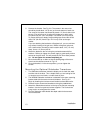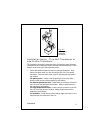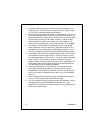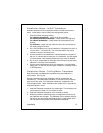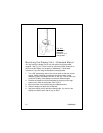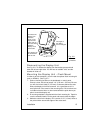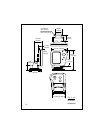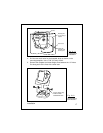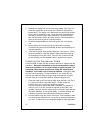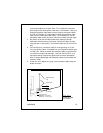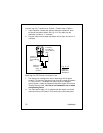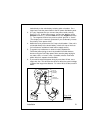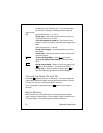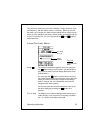
18
Installation
6. Separate the display unit from the mounting bracket. (See Fig. 2-12.)
Press the large button in the center of the bracket to separate the
bracket arms. The display unit is attached to the arms by two screws.
Each screw is covered by a cap. Locate the small slot beside each
cap and pry upward using a small screwdriver. Remove the caps,
then the two screws and the two wave washers. Save these parts in
case you ever want to use the mounting bracket.
7. Screw the threaded studs into the holes on the rear of the display
unit.
8. Set the display unit into place to be sure that it will fit correctly.
Thread the wing-nuts onto the threaded studs to hold the display unit
in place temporarily.
9. Install the DC power wiring as described later in this section. Finally,
finish the installation. Hold the gasket in place around the opening.
Fit the display unit into the cutout. From the rear, screw the thumb-
screws securely onto the threaded studs to hold the unit in place.
Installing the Transducer Cable
A 20 foot length of cable, with the connector attached, is supplied with the
transducer.
During the installation, do not cut the transducer cable or
remove the connector. Do not try to shorten or splice the cable. The
transducer cable includes several wires, along with shielding and
insulation. If the cable is cut, it cannot be repaired.
(Cutting the cable
will also void the warranty.) During installation, if you need to drill any
holes for the cable, they must be large enough to accept the connector.
This will allow you to make the installation without cutting the wire.
1. Route the cable up and over the top edge of the transom. See Fig. 2-
13. Secure the cable using cable clamps. (These clamps are
available from your local marine equipment supplier.)
If you do not want to expose the cable on the deck, you may drill a
new hole (3/4" or 19 mm) through the transom for the cable. (Re-
member
– this hole must be large enough to accept the cable with the
connector attached. Do not cut the cable!) To seal the opening, use
a feed-thru cap where the cable passes through the transom.
2. Run the cable through the interior of the boat. If the transducer cable
runs near another electrical wire, it may pick up electrical interference
or “noise.” To reduce this, try to keep the transducer cable separated



